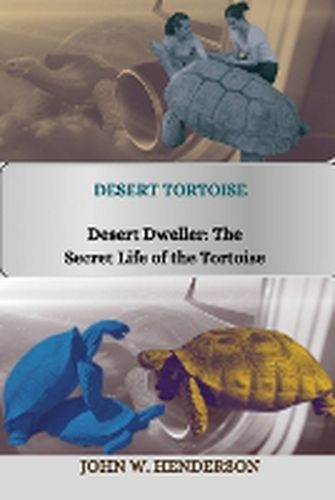Desert Tortoise
John Raphael, John W Raphael

Desert Tortoise
John Raphael, John W Raphael
Gopherus, the scientific name for the interesting reptile known as the desert tortoise, is impressively adapted to the harsh and dry surroundings of the deserts of North America. We will examine the basic characteristics of desert tortoises in this introduction chapter, including their habitat, habits, and special adaptations that allow them to survive in some of the harshest environments on the planet. Priority one should be given to comprehending the environment that desert tortoises live in. The Mojave, Sonoran, and Colorado deserts are among the desert regions in the southwest of the United States where these reptiles are mostly found. Desert tortoises live in a range of environments in these areas, including creosote flats, sandy dunes, rocky outcrops, and desert washes. Desert tortoises have adapted to survive in spite of their harsh circumstances. They use natural shelters like burrows and rock crevices to get away from the searing heat of the day and the bitter cold of the night. In terms of behavior, desert tortoises have amazing behavioral adaptations that help them survive in their hostile desert environment. Aestivation, a kind of dormancy akin to hibernation that enables tortoises to save water and energy during intense heat waves or dry spells, is one of their most remarkable habits. Desert tortoises go into torpor and withdraw to their burrows during aestivation. They do this to lower their metabolic rate and water loss until the weather improves. Apart from their ability to aestivate, desert tortoises are also recognized for their capacity to accumulate fat and water inside their bodies, which helps them to endure in settings where water supplies may be limited or irregular. They may save vital fluids in their desert environment by excreting highly concentrated pee and reabsorbing water from their bladders. In addition, desert tortoises possess unique kidneys that enable them to draw water from their diet, which is mostly composed of succulent plants, herbs, and grasses. The desert tortoise's physical adaptations are similarly remarkable. They can dig tunnels and traverse the hard terrain of the desert because of their strong limbs and strong claws, and their thick, scaly skin helps limit water loss via evaporation. Their domed carapace (shell) protects them from predators and acts as insulation and shade to help control body temperature. All things considered, the desert tortoise is an amazing illustration of evolution in action, showing how a species can adapt to flourish in some of the planet's most hostile settings. We can better appreciate the intricate interactions that exist between living things and their surroundings and the significance of conservation efforts to protect these iconic reptiles for future generations by studying the habitat, behavior, and
This item is not currently in-stock. It can be ordered online and is expected to ship in approx 2 weeks
Our stock data is updated periodically, and availability may change throughout the day for in-demand items. Please call the relevant shop for the most current stock information. Prices are subject to change without notice.
Sign in or become a Readings Member to add this title to a wishlist.


